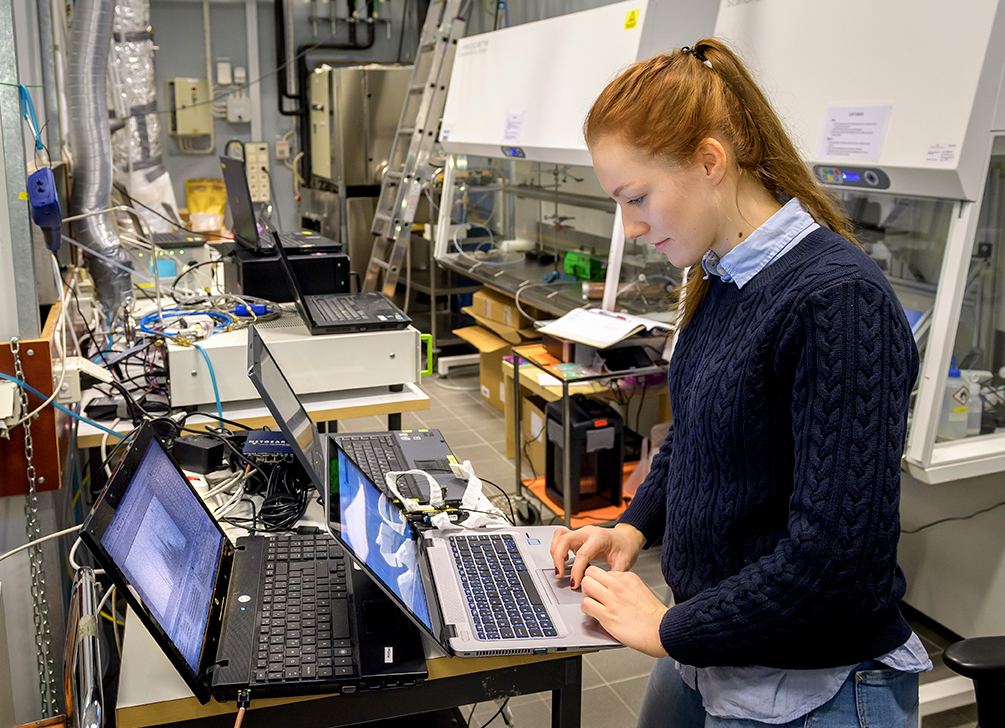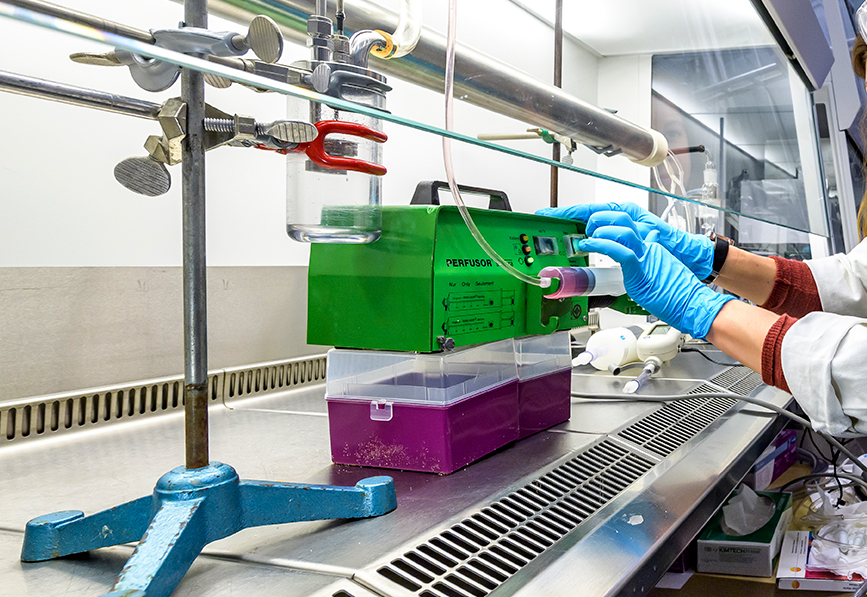Focusing on aerosols
We have a large number of instruments for advanced measurement of airborne particles, including their size distribution, mass, chemical composition, light scattering, density, water uptake and fluorescence. There is also access to a range of different techniques to generate aerosol particles in different size ranges and from different media. In addition, we have possibilities to transform the aerosol by, for example, changing the particles' electrical charge or surface layer. We use different techniques to study how the aerosol particles are affected by temperature changes (up to around 1000°C), ozone, UV light, air humidity or gas composition.
The experimental chambers in the laboratory are specially adapted for aerosol studies. The air flow in these is variable, the walls are made of stainless steel to minimize contamination and air pollution background levels are minimized with airlocks and tight connectors. Containers are also available to handle toxic or potentially infectious aerosol particles.


